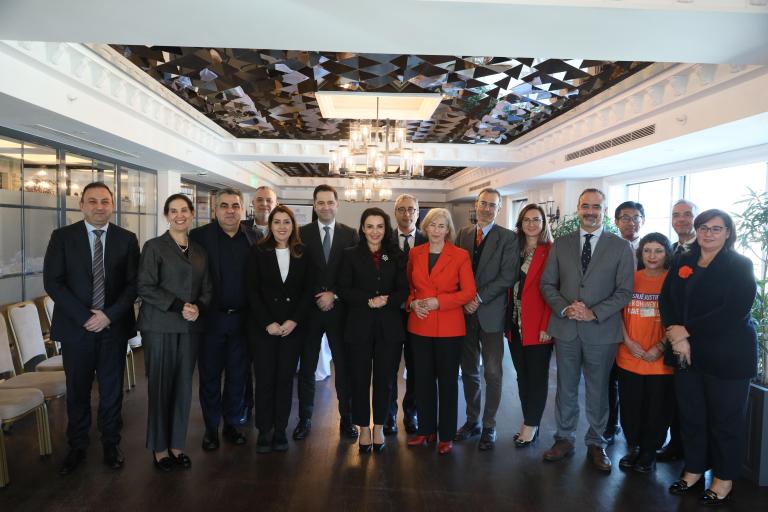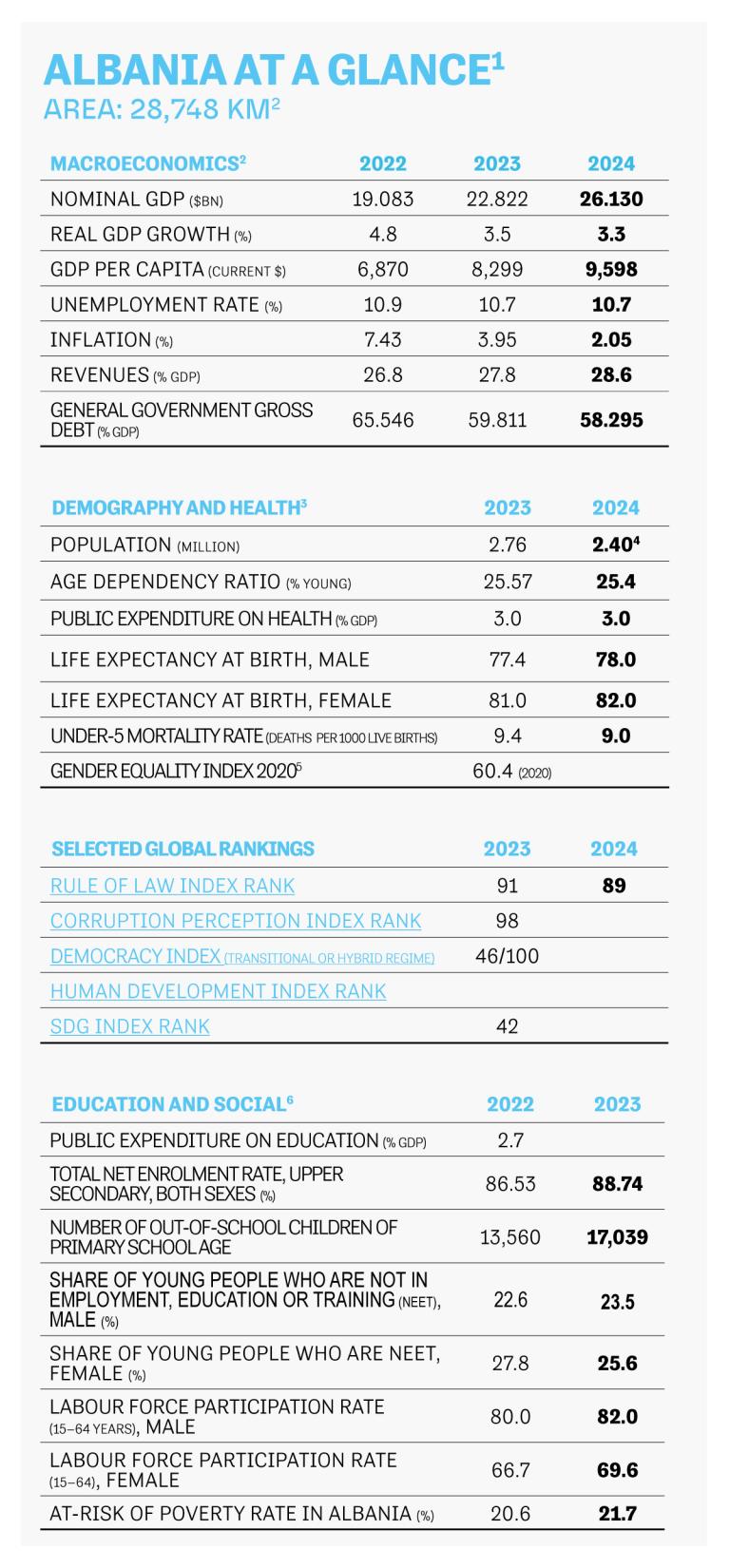Albania, an upper-middle-income country with a population of 2.4 million (Census 2023), has 19% under 18 years old. Despite external shocks, it shows resilience and progress. The economy grew steadily, with GDP per capita rising from $6,396 in 2021 to $9,598 in 2024. Real GDP growth is forecast at 3.3% for 2024, driven by services (50% of economy), agriculture (20%, with agro-processing employing 40%), and industry (20%). Tourism surged, with foreign visitors up 40% in 2023 and 121% year-on-year in Q1 2024, ranking Albania second globally in tourism growth.
Micro-, small, and medium enterprises dominate, making up 99.8% of businesses and employing 81.6% of the workforce, though low productivity and financing constraints persist. In 2023, 31.2% of businesses were women-owned or managed, with the highest share in small businesses (24.5%). The informal sector accounts for ~30% of GDP, with 20% of the population below the national poverty line (30% using the upper poverty line). Children (0-17 years) face a 26.5% poverty risk, compared to 19.2% for adults (18-64). Households with dependent children have a 23.9% poverty risk, versus 11.3% without.
Life expectancy improved to 78 years for men and 82 for women in 2024, but public spending on health (3% of GDP) and education (2.7% of GDP) remains low. Albania’s purchasing power is 35% of the EU average (2023), signaling the need for economic reforms. Exports contribute ~20% to GDP, while imports exceed 40%, leaving the economy vulnerable to global energy prices, grain imports, and supply chain issues.
Unemployment is high, especially among youth and women, with 10.7% overall in 2024. Youth not in employment, education, or training (NEET) rates are 23.5% for males and 25.6% for females (2023). Labor force participation (15-64 years) is 82% for males and 69.6% for females. The informal economy and structural weaknesses hinder competitiveness.
The government has implemented reforms via the National Strategy for Development and European Integration (2022-2030), Economic Reform Programme (2022-2024), SDGs Acceleration Roadmap, and National Reform Agenda (2024). Public debt fell below 60% of GDP (58.3% in 2024), with inflation at 2.05%. Albania’s EU accession advanced, with negotiations opening on Cluster 1 (Fundamentals) in October 2024 and Cluster 6 (External Relations) in December 2024, aiming for EU membership by 2030.

Global rankings improved: SDG Index (42nd in 2024, up from 54th in 2023), Corruption Perception Index (98th in 2023, up from 110th in 2021), and Rule of Law Index (89th in 2024). Albania played a key role in the Western Balkans Growth Plan (2024), joined the UN Human Rights Council (2024-2025), and hosted summits like the Ukraine-Balkans Summit and Afghan Women’s Summit (2024).
Challenges remain: youth unemployment, labor informality, corruption, illicit financial flows, money laundering, and limited investment in health, education, and social services. Still, Albania’s resilience and reforms position it for sustainable development and deeper EU and global integration.

1. Figures for recent years, depending on the source, are still mostly projections.
2. International Monetary Fund, World Economic Outlook database, October 2024.
3. Albanian Institute of Statistics (INSTAT), Albania in Figures 2022; INSTAT various databases 2024; UNICEF; other online sources.
4. The rapid fall in population size is on account of figures prior to 2024 being INSTAT estimates, while the 2024 figure is based on the 2023 national census.
5. https://www.instat.gov.al/en/publications/books/2020/gender-equality-in…
6. INSTAT, Albania in Figures 2022; INSTAT, various databases 2024; UNESCO; other online sources.

